The Yellowstone Volcano Erupted More Recently Than You Think
The geologic history of the land underlying Yellowstone National Park is defined by the influence of volcanism. The prime factor in this regard is, of course, the Yellowstone Volcano. Anyone who’s watched the History Channel or National Geographic knows about this incredible volcano, one of the largest on Earth, and its destructive past. Unfortunately, the television programs on these channels might have left you with the impression that an eruption at Yellowstone could occur any day now or is even imminent. That’s a common misconception we covered in another article. You can read about that here.
Besides the sensationalism, you may have also learned that the Yellowstone Volcano has erupted three times. First, 2.1 million years ago, forming what is called the Huckleberry Ridge Tuff, then again 1.3 million years ago, forming the Mesa Falls Tuff, and most recently 631,000 years ago forming the Lava Creek Tuff.
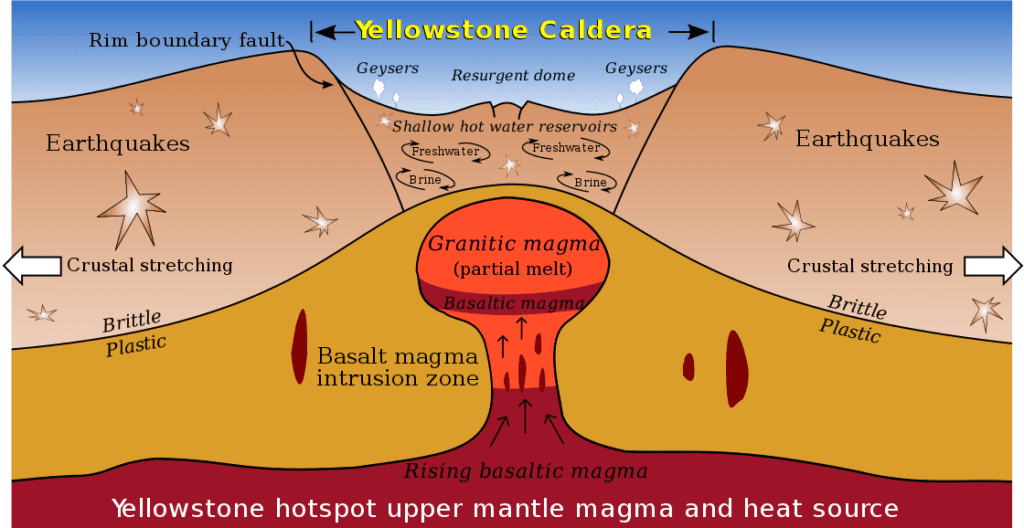
First, 2.1 million years ago, forming what is called the Huckleberry Ridge Tuff, then again 1.3 million years ago, forming the Mesa Falls Tuff, and most recently 631,000 years ago forming the Lava Creek Tuff
But what if I told you the last time Yellowstone erupted wasn’t 631,000 years ago? In fact the volcano has experienced over 30 eruptions since the last ‘mega-eruption’ 631,000 years ago, with the most recent eruptions taking place only 70,000 years ago. These eruptions were, for the most part, not particularly explosive (compared to the mega-eruptions), and largely consisted of magma flows. Some however, such as the eruption that formed the West Thumb of Yellowstone Lake approximately 150,000 years ago, released enough power to gouge the landscape, excavate immense amounts of rock, and leave behind craters miles in diameter.
In some places, such as on the road between West Yellowstone and Madison junction, the magma beneath the surface is still cooling after these recent eruptions. At Firehole Canyon Northeast of Old Faithful, the Firehole River has carved its way through a lava flow only 110,000 years old, providing us a glimpse inside these most recent additions to Yellowstone’s geology. These more recent eruptions have largely filled in the caldera left behind after the eruptions 631,000 years ago, shaping the Yellowstone we see today.
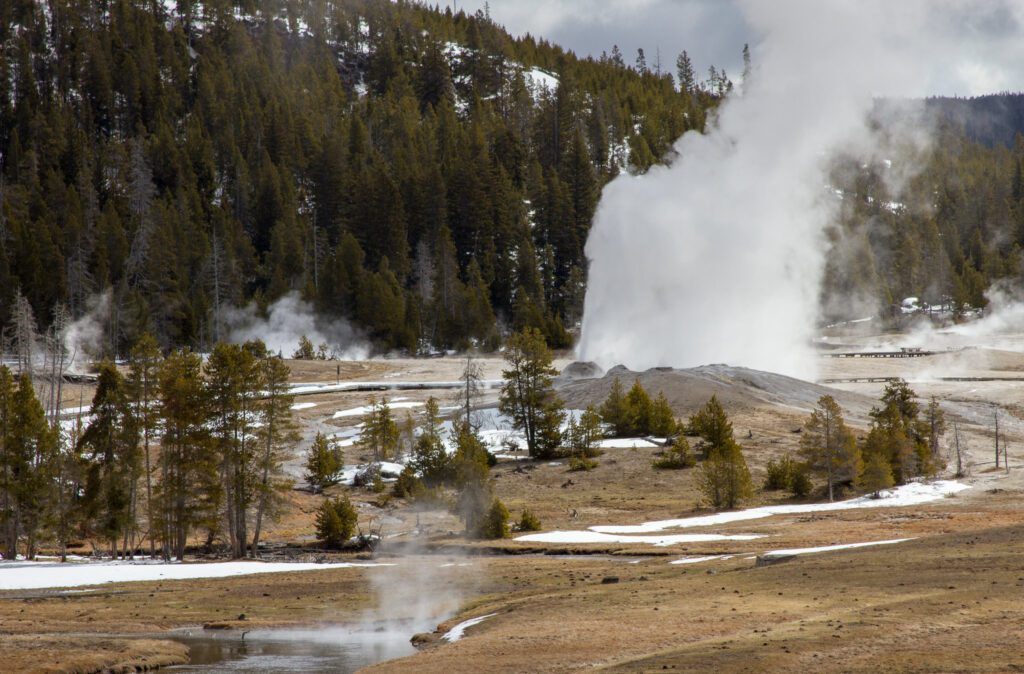
In addition to lava flows, another type of eruption, not of molten rock, but of superheated water and steam, has occurred recently in Yellowstone. Hydrothermal explosions are a unique phenomena distinct from hot springs or geysers, but powered by the same incredible force: superheated water.
About 14,000 years ago one such explosion created Mary Bay on the edge of Yellowstone Lake. This hydrothermal explosion left a 1.5 mile wide crater, the largest known hydrothermal explosion crater in the world. The force of this explosion flung debris almost two miles from the site of the explosion.
More recently, and on a much smaller scale, a hydrothermal explosion in Norris Geyser Basin occurred in 1989 at Porckchop Geyser. Prior to the explosion, Porkchop was a hot spring that produced small eruptions irregularly, often with years passing between eruptions.. However in 1985 the geyser began to erupt continuously, culminating in an explosive release of pressure on September 5th, 1989. Rocks over a meter wide were thrown from the geyser, with smaller debris being flung over 60 meters from the explosion. After all was said and done a small hot spring inside a ragged crater was all that was left of Porkchop Geyser. Small hydrothermal explosions like this occur relatively often in Yellowstone, but most occur far beyond the highly trafficked areas of the park.
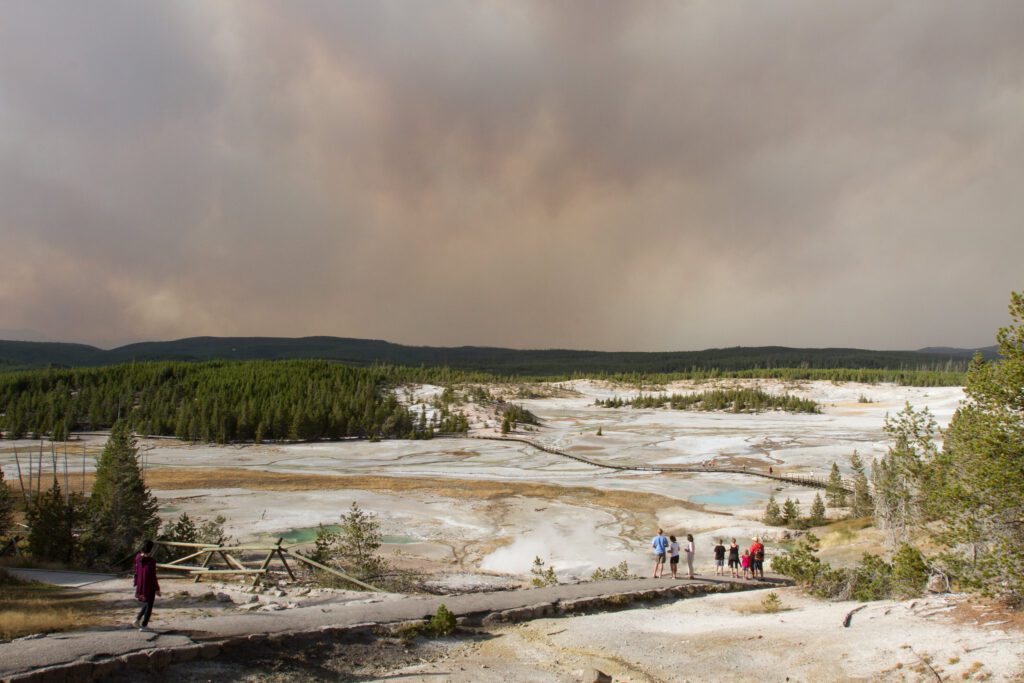
With all this in mind, it’s worth remembering how untamed and dynamic this landscape is, perhaps more so than any other place on Earth. Yellowstone has been shaped over millions of years by tectonic forces, volcanism, glaciation, and hydrothermal activity. Even today the landscape continues to subtly change under our feet. The incredible dynamic nature of this landscape is one of the many things that make Yellowstone such a unique and incredible National Park.
Read More

Exploring Yellowstone in the Winter
The vast majority of the park’s annual visitors come during the much milder summer months, leaving the park to the die-hard Yellowstone admirers throughout the winter. This absence of visitors makes exploring Yellowstone in the winter a unique and rewarding experience.

The Yellowstone Volcano Erupted More Recently Than You Think
The Yellowstone Volcano Erupted More Recently Than You Think The geologic history of the land underlying Yellowstone National Park is defined by the influence of

How to Stay Safe in Bear Country
Here’s a short guide on how to stay safe from Yellowstone bears while visiting America’s first national park.
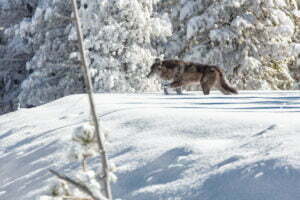
A Short History of Wolves in Yellowstone
A Short History of Yellowstone Wolves The story of Yellowstone wolves, indeed wolves across most of the American West, is a story of misunderstanding, extermination,
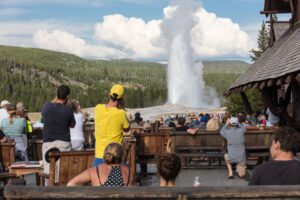
Is The Yellowstone Volcano About to Erupt?
Is The Yellowstone Volcano About to Erupt? Suddenly, as if out of nowhere, the ground shakes and buckles under Yellowstone National Park. Steam bellows out
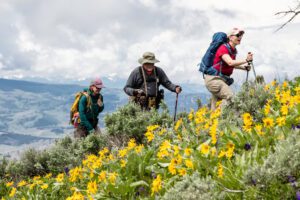
5 Reasons You Should Visit Yellowstone
Five Reasons You Should Visit Yellowstone Whether you’re on a family vacation, a road trip with friends, or just out to explore the country, Yellowstone
Want To Discover Yellowstone In Person?
Yellowstone offers more than anyone could experience in a lifetime, much less a day. Don’t waste a moment of your trip—discover the wonders of America’s first national park on one of our guided Yellowstone tours with our trusted and experienced guides.

